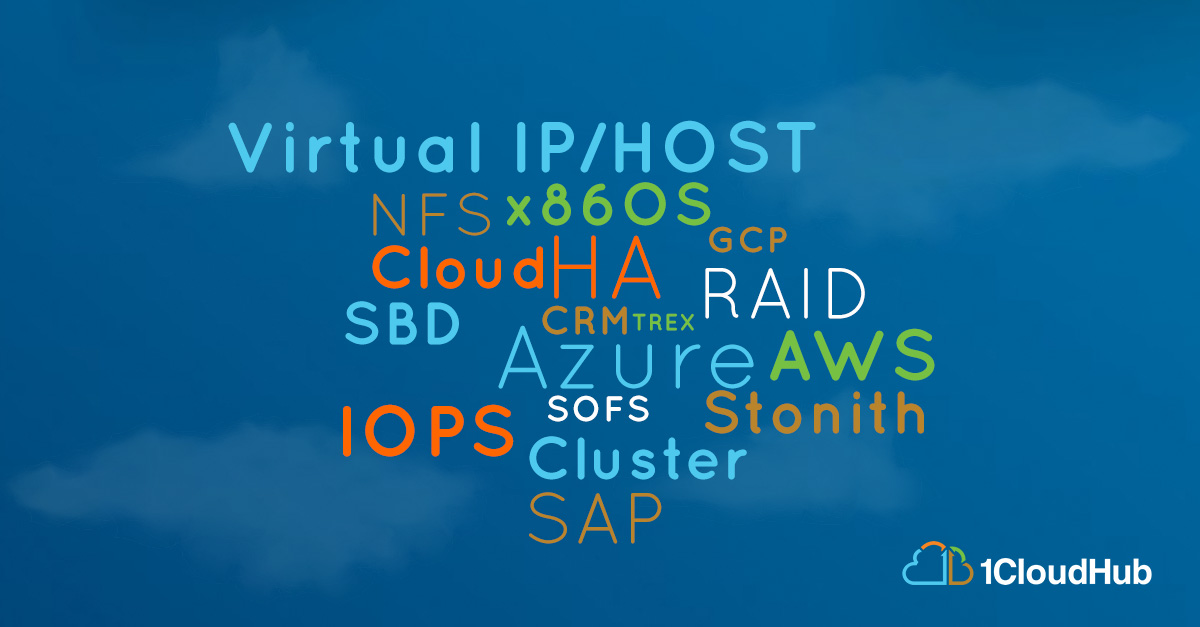Once the decision to migrate SAP to the cloud has been made, it’s time to plan and arrive at the migration methodology. From the technical aspect, there needs to be detailed planning which lays out the migration approach (the how part). There are some key considerations that need to be understood and addressed for a successful SAP migration. It may include re-platforming OS or database, designing for High Availability (HA) at application and DB level, provisioning a reliable file server, and designing the disk layout and backup strategy load as per customer requirement.
Cloud migration for SAP – Managed Approach
Migrating SAP on cloud has its fair share of challenges. The main challenge is to achieve high availability and performance on cloud comparable to on-prem applications. This blog explores the challenges of migrating SAP on cloud and talks about 1CloudHub's experience in overcoming them.
Migration gets even more complex when we are dealing with a large SAP workload which has HA dependencies with other enterprise applications. We had one such situation in a project where the client had SAP CRM system with dependencies on SAP EP having a backend connection to a SAP content server for document handling. They also had SAP Trex for search functionality and a web dispatcher to handle user request. The entire workload was running on AIX and Windows. Our work was challenging and interesting as we had to achieve the required high availability with re-platforming despite these dependencies.

Design Challenges
In cloud, we cannot use the same solutions which we had for on-prem. For example, cloud supports only x86 architecture, there is no equivalent performing shared block storage and there is no virtual host / virtual IP concept on the cloud. So, the design of infrastructure during the migration requires a cloud-specific mapping of on-prem equivalents. In the following sections, we explore these challenges in detail and provide ways to overcome based on our experience in migrating SAP on cloud.
HA design leveraging load balancers
For a non-clustered SAP landscape, achieving on-prem performance levels even when migrated to cloud is easy. The key challenge is in designing HA solution on cloud for a clustered SAP environment which delivers a similar performance experience as on-prem.
In one of our recent engagements, we re-platformed the OS from on-prem Aix to Suse Linux on cloud. As there is no shared block storage and virtual hostname in cloud, for SAP CRM and SAP EP we leveraged the load balancer and Linux Pacemaker cluster to achieve HA at application and DB level. The load balancer has a versatile use; it can be used to achieve distribution of load or supplement in handling a virtual host. Here we used a load balancer to address virtual host requirement and as a health probe on the instance for failover.
While designing for HA, it is also equally critical to address fencing, as that’s the one helps in restarting the instance and avoid split brain. We used a SBD device with 3 nodes to have availability at the fencing level and Azure STONITH device to address split brain.
Shared storage
Highly available shared storage is still a challenge in cloud. To address this there are various options available depending on the need either for NFS or for SMB storage.
For SAP CRM and SAP EP running on Linux, we used a two node NFS cluster using the same Pacemaker cluster and load balancer to address the shared storage requirement like /sapmnt, /usr/sap/SID/sys and /usr/sap/SID/A(SCS) & ERS. We had enabled DRBD replication to synchronize the data sync between the two NFS nodes.
On Windows, we used a SOFS cluster to achieve the HA for SAP content server and Trex. For IIS, we used a load balancer to route traffic to a healthy node. Here the load balancer is used for probing availability and route traffic.
Disk & backup
When migrating to the cloud, database disk IOPS and backup are often overlooked. Choosing the right disk type for configuring LVM or the right software RAID for datafile and log is key in achieving required throughput.
By considering all these, and backed by a strong cloud and SAP expertise we were able to successfully migrate large SAP enterprise workloads in cloud with 99.95% overall availability on time.
To know more on our migration approach, read our case study on how we helped one of the world’s top shipping to migrate their SAP on cloud.
Written by:
Easwar S (LinkedIn)
Head — SAP on Cloud Practice
Sharing is caring!

